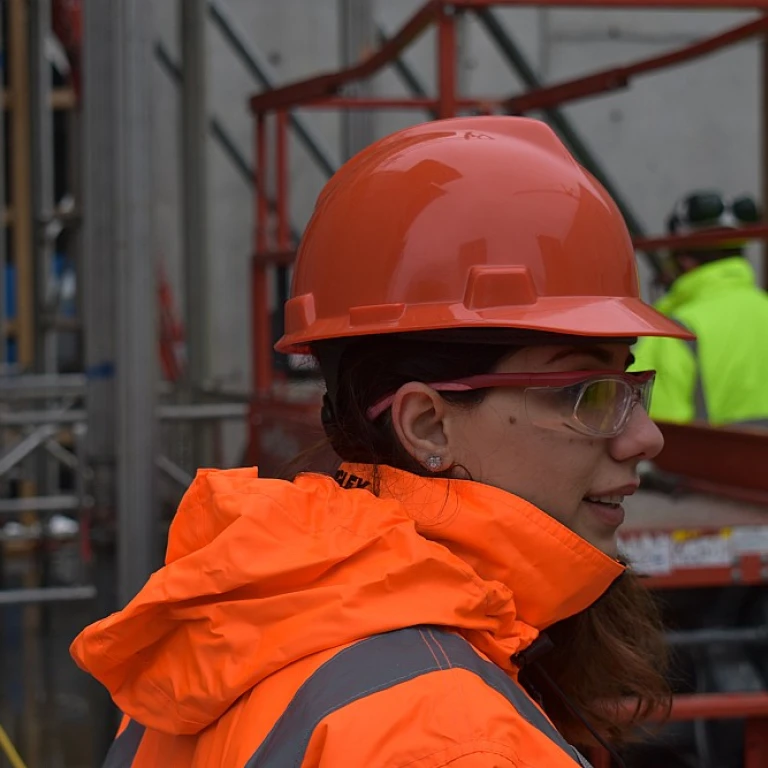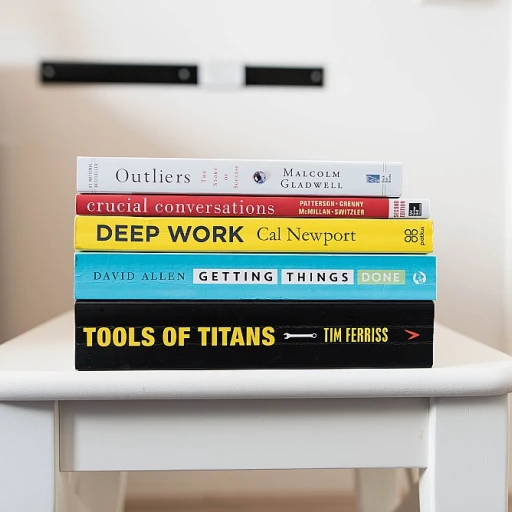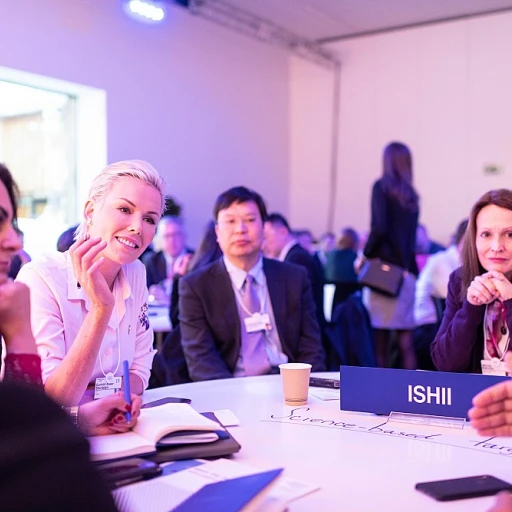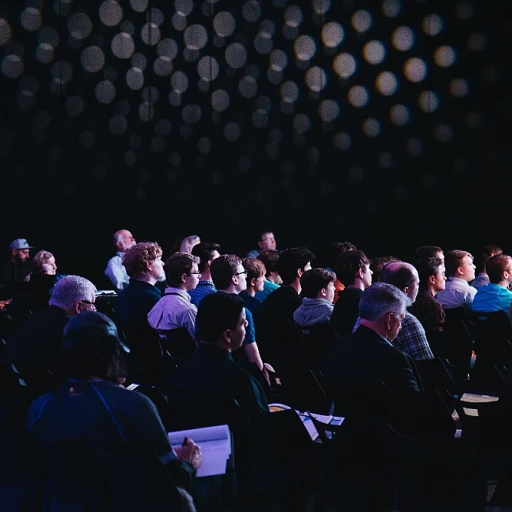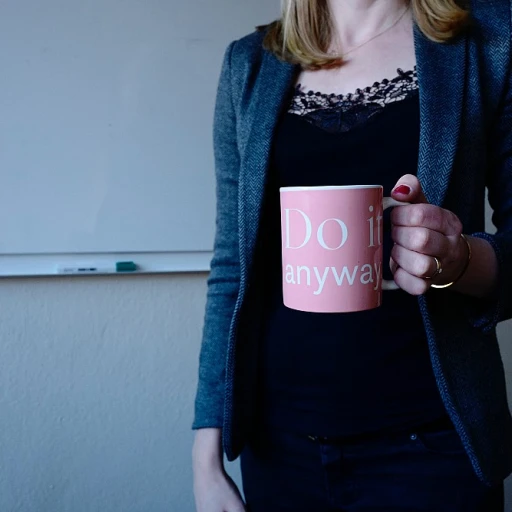
The Role of Work Genius in Continuous Learning
Improving Personal and Team Performance
In the journey of continuous learning, individuals and teams must adapt and grow in their roles. The Work Genius assessment provides a practical framework to unlock these potentials. Through understanding the different types of geniuses and their natural gifts, leaders can better match tasks to members, ensuring that everyone's strengths are utilized effectively. Continuous learning isn't just about acquiring new skills but optimizing how existing capabilities are applied within a team. By identifying the working frustrations of team members through this assessment, leaders can mitigate potential frictions. The genius model, alongside other tools such as trauma-informed motivational interviewing, can create a more harmonious and productive team environment.Leveraging the Genius Framework
The genius framework categorizes working behaviors into types, helping teams and individuals understand their unique contributions to tasks and projects. With this approach, team members can focus on areas where they naturally excel, avoiding the pitfalls of mismatched roles that often lead to dysfunctions in team dynamics. Working geniuses are integral to leadership success. Leaders equipped with insights from the genius assessment are better positioned to fill gaps within their teams and assign tasks that align with individual strengths. This ensures that every stroke in the team's plan contributes to their overall success. Continuous learning through the lens of the genius framework not only improves individual performance but also the collective output of teams. For more insights into how these frameworks redefine learning and team efficiency, exploring trauma-informed approaches offers valuable perspectives on leadership and problem-solving in diverse settings.Decoding the Work Genius Assessment
Analyzing the Genius Framework for Effective Assessment
To decode the Work Genius assessment, it's essential to first understand the fundamental principles behind the genius model. The assessment tool focuses on identifying key areas where an individual exhibits a natural gift or proficiency. Recognizing these areas helps in aligning tasks with the types of work that individuals perform with ease and enthusiasm. The genius model is built on the premise that each person has a unique combination of working geniuses — areas where they possess a natural gift that provides fulfillment when engaged. By analyzing these geniuses, you can sketch a team map that displays how different team members contribute to various types of work. This not only highlights the strengths of each member but also points out potential working frustrations when tasks don't align with one's genius. Here's a concise breakdown of how the assessment works:- Identifying Core Geniuses: Each team member partakes in understanding their working geniuses. With this understanding, leaders can effectively fill roles within projects that require specific types of genius.
- Understanding Types of Work: Once the core geniuses are identified, the focus can pivot to pairing the right tasks with the right individuals. This not only enhances team productivity but also boosts individual satisfaction.
- Tracking Team Dynamics: A well-mapped genius framework helps track how geniuses interact within teams. This dynamic is crucial in preventing dysfunctions in a team environment.
- Leadership Insights: Leaders can leverage these insights to increase team efficiency and cohesion. By comprehending the various genius types, leadership can better strategize, ensuring that every team member's strength is utilized effectively.
Benefits of Integrating Work Genius Insights
Harnessing the Power of Work Genius Insights
Integrating insights from the Work Genius assessment into your continuous learning strategy can be a game-changer. This genius model, developed by the Table Group, provides a detailed understanding of how individuals and teams operate. By identifying the natural gifts and working frustrations of each team member, leaders can tailor tasks and roles to maximize efficiency and satisfaction.
The genius framework categorizes people into different types of working geniuses. Each type represents a unique area where an individual excels, helping leaders to fill gaps in their teams. This understanding can significantly enhance team dynamics, as it allows for the allocation of tasks that align with each person's strengths. By doing so, the potential for dysfunctions in the team is minimized, and the overall productivity of the team is boosted.
Enhancing Leadership and Team Dynamics
Leadership plays a crucial role in leveraging the insights from the genius assessment. By understanding the various working geniuses within their teams, leaders can foster a more collaborative and efficient work environment. This knowledge helps in creating a team map that highlights the strengths and areas for development within the team, ensuring that all team members are positioned for success.
Moreover, the assessment aids in identifying areas where additional training or support might be needed. For example, if a team lacks individuals with the genius of wonder, leaders can implement strategies to cultivate this skill or seek external resources to fill this gap. This proactive approach ensures that all areas of work are covered, leading to a more balanced and effective team.
For those interested in unlocking opportunities through continuous learning, integrating Work Genius insights offers a structured path to personal and professional growth.
Challenges in Implementing Work Genius Strategies
Tackling Roadblocks While Applying Work Genius Techniques
Integrating the Work Genius model into a team's strategy can undoubtedly unlock potential, allowing individuals and teams to harness their natural gifts effectively. However, implementing these strategies isn’t without its hurdles. First, understanding the various types of working geniuses and accurately assessing them can be daunting. These assessments require leaders and team members to recognize their own areas of genius and frustration. This introspection can disrupt long-standing working habits, leading to an initial resistance or denial. Another challenge lies in communication, especially in larger teams or organizations. Leaders need to convey the benefits of utilizing the genius model to fill specific roles or tackle types of work that naturally align with a team member's abilities. Miscommunication or lack of understanding can undermine the entire process. Moreover, finding the balance between an individual’s genius areas and the organization's needs demands careful alignment. The mismatch might lead to inefficient task assignments, resulting in further frustrations. Organizations need a well-mapped strategy to ensure that roles align with both the business objectives and individual strengths. Finally, confidentiality and a strong privacy policy around assessments are crucial. Individuals may be cautious of how their genius assessments are shared or used within the team setting. Establishing a framework that protects individuals' data while optimizing their potential contribution is key. Addressing these challenges requires a proactive approach from leadership, armed with an openness to foster honest dialogue within their teams. Such discussions can help navigate the complexities of implementing Work Genius, ensuring that both leaders and team members can leverage these insights effectively without falling prey to dysfunctions or misalignments inherent in team dynamics.Case Studies: Success Stories with Work Genius
Proven Success Stories with Genius Insights
The compelling impact of utilizing the Work Genius assessment can be seen through various case studies involving diverse teams and organizations. Integrating the genius model within team dynamics often leads to significant transformations, aligning team member strengths with the right tasks. Many organizations have reaped the benefits of understanding the different types of working geniuses within their teams. One notable example is a technology company that witnessed a reduction in dysfunctions team-wide after implementing genius insights in their leadership strategies. By accurately mapping team members' natural gift areas, they filled crucial gaps and aligned individuals with roles that suited their working genius. In another case, a healthcare organization enhanced team collaboration by leaning into the framework. Leaders recognized the stroke of genius in pairing team members whose strengths complemented one another’s, reducing working frustration and increasing productivity. The insights gleaned from the assessment allowed these teams to understand the diverse spectrum of working geniuses, helping them to create holistic teams where individuals felt valued and engaged. Applying these strategies led not only to improved team performance but also to individual satisfaction in the workplace. Overall, the genius assessment has proven to be an indispensable tool for leaders aiming to unlock their teams' fullest potential. As the focus shifts toward more inclusive and efficient team structures, the value of understanding the unique genius types of each team member becomes increasingly clear.Future Trends in Work Genius and Continuous Learning
Anticipating the Future of Work Genius in Continuous Learning
As we look toward the future, the implementation and understanding of the Work Genius assessment will evolve, reshaping how teams and individuals approach continuous learning. The genius framework, initially designed to understand working geniuses and natural gifts, will likely see expanded applications beyond its current scope.- Integration with Technology: Future trends indicate greater integration with digital platforms, helping teams map their collective strengths and address working frustrations. The advent of AI and machine learning could allow for more personalized and adaptive assessments, tailoring insights to individual and team needs efficiently.
- Customization and Accessibility: As businesses strive for inclusivity, the need for accessible assessments will rise. The genius model could adapt to cater to various working types, increasing its applicability across diverse teams and industries. This customization will ensure leadership teams have the necessary tools to foster inclusivity and growth.
- Focus on Soft Skills: With leadership increasingly valued for emotional intelligence, the genius assessment will likely incorporate indicators of soft skills. Organizations will emphasize a balance between technical abilities and interpersonal skills, ensuring leaders fill their teams with individuals who complement one another.
- Global Expansion: As the workplace becomes more interconnected, there's potential for the assessment to accommodate cultural differences in teamwork dynamics. This can address global dysfunctions, offering teams around the world a unified approach to understanding their strengths and areas of improvement.
